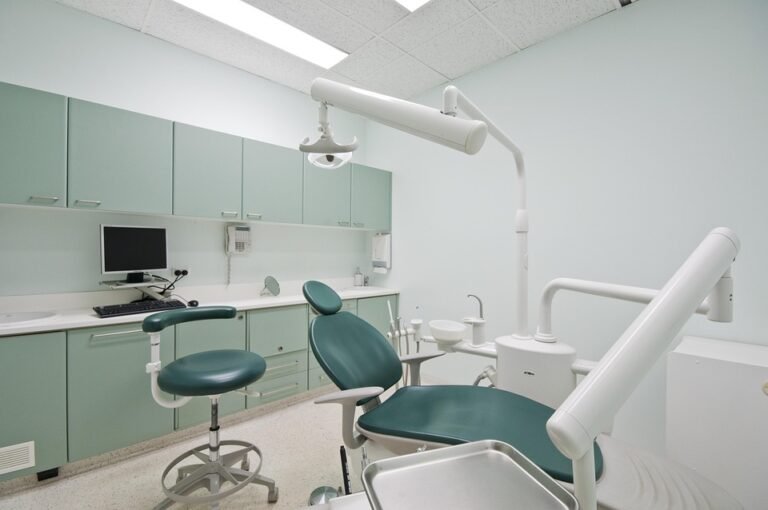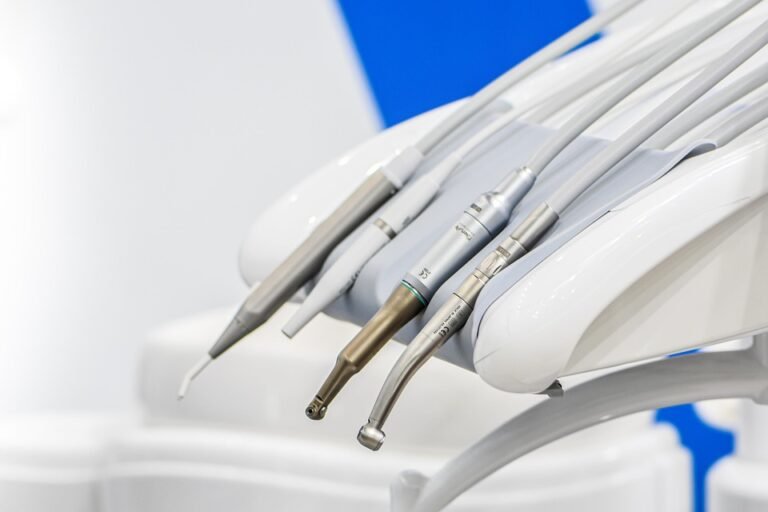What are some specific applications of bio-inspired dental materials
Okay, so I’m doing a project on bio-inspired dental materials, and I understand the general concept – materials that mimic natural tooth structures or processes to improve dental treatments. But I’m struggling to find specific examples beyond the obvious.
For instance, I know about using hydroxyapatite as a coating for implants because it’s similar to tooth enamel. But what else is out there? I’m looking for examples of how these materials are actually used in dentistry.
I’m interested in learning about applications in:
- Restorative dentistry: Are there bio-inspired alternatives to traditional fillings or crowns? How are they better?
- Implantology: Beyond just coatings, are there bio-inspired implant designs or materials that improve osseointegration or reduce the risk of peri-implantitis?
- Regenerative dentistry: Are there any bio-inspired materials being used to stimulate tooth regeneration or repair damaged enamel?
- Orthodontics: Could bio-inspired materials be used in braces or aligners to reduce discomfort or shorten treatment time?
It would also be great to know if any of these materials are already commercially available, and if not, what the biggest hurdles are to bringing them to market. I’m especially interested in innovative approaches that are still in the research and development phase. Thanks for any insights you can provide!
Answer
Bio-inspired dental materials draw inspiration from the structure, composition, and properties of natural tooth tissues and other biological systems to create restorative and preventative dental materials that are more biocompatible, durable, and aesthetically pleasing. Here are some specific applications, broken down by category:
1. Enamel Regeneration and Repair:
- Amelogenin-Based Materials: Amelogenin is a key protein involved in enamel formation. Bio-inspired materials use amelogenin-derived peptides or recombinant amelogenin to promote the remineralization of early enamel lesions. These materials can be incorporated into toothpastes, mouthwashes, or topical treatments to enhance enamel repair and prevent caries progression. The aim is to mimic the natural process of enamel formation by providing a template for mineral deposition, leading to the formation of highly ordered enamel crystals.
- Hydroxyapatite Nanoparticles: Enamel is primarily composed of hydroxyapatite (HA). Bio-inspired approaches involve synthesizing HA nanoparticles with controlled size, morphology, and composition that closely resemble natural enamel crystals. These nanoparticles can be incorporated into dental varnishes, bonding agents, and restorative materials to enhance remineralization, reduce dentin hypersensitivity (by occluding dentinal tubules), and improve the mechanical properties of resin composites. Surface modifications of HA nanoparticles with biomolecules can further enhance their interaction with tooth tissues.
- Biomimetic Scaffolds: Three-dimensional scaffolds that mimic the hierarchical structure of enamel are being developed to guide enamel regeneration. These scaffolds can be seeded with enamel-forming cells (ameloblasts) or used to direct the deposition of minerals from saliva or artificial remineralizing solutions. The scaffold provides a template for cell attachment, proliferation, and differentiation, leading to the formation of new enamel-like tissue. Research focuses on using materials like silk fibroin or peptide-based hydrogels to create these scaffolds.
2. Dentin Regeneration and Repair:
- Growth Factor Delivery Systems: Dentin regeneration involves stimulating the differentiation of dental pulp stem cells into odontoblast-like cells, which secrete dentin matrix. Bio-inspired materials can incorporate growth factors such as Transforming Growth Factor-beta 1 (TGF-β1) or Bone Morphogenetic Protein-2 (BMP-2) within controlled-release delivery systems. These systems, often based on biodegradable microspheres or hydrogels, release growth factors over time, promoting dentin formation and pulp regeneration.
- Bioactive Scaffolds for Pulp Regeneration: Similar to enamel regeneration, bio-inspired scaffolds are used to support pulp regeneration after injury or disease. These scaffolds are designed to be biocompatible, biodegradable, and promote cell attachment, proliferation, and differentiation. Materials like collagen, chitosan, or silk fibroin can be used to create scaffolds with appropriate porosity and mechanical properties to facilitate cell infiltration and neovascularization within the pulp space. The scaffolds can also be functionalized with bioactive molecules to enhance their regenerative potential.
- Biomimetic Mineralization: Dentin is a composite material consisting of collagen fibers and mineral crystals. Bio-inspired approaches aim to mimic this structure by creating materials that promote the deposition of minerals within a collagen matrix. This can be achieved by using self-assembling peptides that guide the formation of mineral crystals or by incorporating calcium and phosphate ions into a collagen scaffold, allowing for in situ mineralization.
3. Adhesion and Bonding:
- Biomimetic Adhesives Inspired by Marine Mussels: Marine mussels secrete adhesive proteins (e.g., DOPA-containing proteins) that allow them to attach strongly to wet surfaces. Bio-inspired dental adhesives are being developed based on these mussel adhesive proteins or synthetic analogs, such as polydopamine (PDA). These adhesives offer improved bonding strength and durability, even in the presence of moisture. PDA can be used as a primer to enhance the adhesion of resin composites to dentin or enamel.
- Peptide-Based Adhesives: Short peptides can be designed to bind specifically to tooth structures or restorative materials. These peptides can be incorporated into dental adhesives to improve their bonding performance and reduce microleakage. By mimicking the specific interactions between natural tissues and adhesive proteins, these peptides can enhance the interfacial bonding strength.
- Bio-inspired Surface Modification: Modifying the surface of dental implants or restorative materials with biomolecules can improve cell adhesion and osseointegration. For example, coating titanium implants with extracellular matrix proteins like fibronectin or laminin can enhance cell attachment and promote bone formation around the implant.
4. Implant Materials:
- Osseointegrative Coatings: Bio-inspired coatings can enhance the osseointegration of dental implants. These coatings often consist of hydroxyapatite or other calcium phosphate materials that promote bone formation around the implant. The coatings can be applied using techniques such as plasma spraying, sol-gel deposition, or electrochemical deposition. The goal is to create a biocompatible interface between the implant and the bone tissue, leading to improved implant stability and longevity.
- Biomimetic Scaffolds for Bone Regeneration around Implants: Bone loss around dental implants is a common problem. Bio-inspired scaffolds can be used to regenerate bone tissue in these areas. These scaffolds are designed to be biocompatible, osteoconductive, and osteoinductive. They can be made from materials such as collagen, calcium phosphate ceramics, or synthetic polymers. The scaffolds provide a framework for bone cells to attach, proliferate, and differentiate, leading to the formation of new bone tissue.
- Antibacterial Coatings: Bio-inspired antibacterial coatings can prevent biofilm formation on dental implants and reduce the risk of peri-implantitis. These coatings can incorporate antimicrobial peptides, enzymes, or nanoparticles that inhibit bacterial growth. For example, silver nanoparticles or chitosan coatings have been shown to be effective in reducing biofilm formation on implant surfaces.
5. Preventative Materials:
- Enzyme-Based Anti-Caries Agents: Certain enzymes, such as mutanase and dextranase, can break down the glucans produced by bacteria that contribute to plaque formation. Bio-inspired preventative materials incorporate these enzymes to disrupt the formation of biofilms and reduce the risk of caries. These enzymes can be incorporated into toothpastes or mouthwashes.
- Probiotic Delivery Systems: Probiotics are beneficial bacteria that can help maintain a healthy oral microbiome. Bio-inspired delivery systems can be used to deliver probiotics to the oral cavity in a controlled manner. These systems can be based on microcapsules or hydrogels that release probiotics over time, helping to restore the balance of the oral microbiome and prevent the growth of harmful bacteria.
- Bio-inspired Fluoride Delivery: Instead of simply applying fluoride, bio-inspired approaches might incorporate fluoride into materials that mimic natural enamel formation, leading to more effective and targeted fluoride delivery. This could involve incorporating fluoride into HA nanoparticles or developing fluoride-releasing coatings that promote enamel remineralization.
6. Other Applications:
- Artificial Saliva: Bio-inspired artificial saliva formulations are designed to mimic the composition and properties of natural saliva. These formulations can contain proteins, enzymes, and minerals that help to maintain oral health in patients with dry mouth.
- Materials for Temporomandibular Joint (TMJ) Implants: Bio-inspired materials are being developed for TMJ implants to improve their biocompatibility, durability, and functionality. These materials can incorporate growth factors to promote tissue regeneration or be designed to mimic the mechanical properties of natural cartilage.
The field of bio-inspired dental materials is rapidly evolving, with ongoing research focused on developing new materials and technologies that can improve the prevention, diagnosis, and treatment of dental diseases. The key is to understand the intricate details of biological structures and processes and then translate that knowledge into innovative and effective dental materials.

